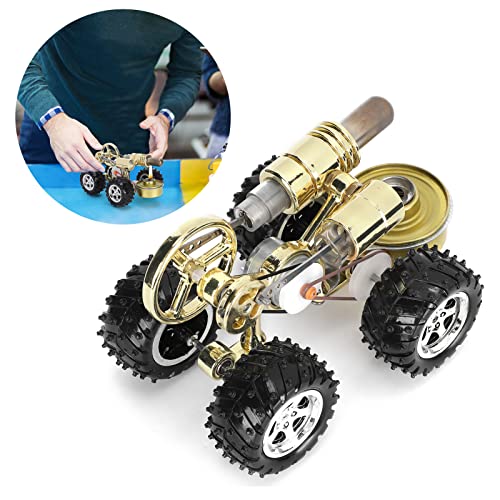As a result of ongoing discussions, I've been working on a steam turbine design spreadsheet. This is the latest (probably final, for now) model.
New features compared to the Mk II version posted on the tesla turbine thread:
Condensation within the turbine is now considered, and a target exit steam quality can be set. Generally this would be in the range 0.9 to 1.
Calculation of convergent-divergent nozzle throat sizes.
A method for estimating the partial admission losses on the first stage, this can be used to set the losses parameter to an appropriate value.
Funky issues:
The convergent-divergent nozzle throat calculations can't handle partially condensed steam, and will sometimes specify a throat larger than the outlet if there is condensation in the nozzle. I don't even know what should actually happen when steam is condensing in the gas stream as it exits a supersonic nozzle. Perhaps it would be best to only use subsonic nozzles in condensing stages.
So, some general observations.
Model sized turbines have a big problem: If you want a practical size of turbine, you must use partial admission (not all of the turbine rotor is in front of nozzles). This rules out using reaction turbines, and causes big problems for impulse turbines too because partial admission can dramatically reduce the turbine efficiency. In fact in small turbines it tends to be by far the largest source of losses. The issue is generally worse when the system is operating at higher pressure because the steam is denser. Multiple pressure stages tend to amplify the issue because the losses apply for every stage! Velocity staging can be a bit of a workaround if only because using it tends to result in larger nozzle areas per pressure stage, but generally the efficiency is poor. This issue starts getting much more manageable above a few kW rated output... but that's a lot for a model!
So for anyone hypothetically wanting to power their house with a little steam turbine, not good news. I think the best operating condition for a small scale steam turbine would be as the second stage after a reciprocating expander. Then it can work in low density pre-expanded steam and have a much higher degree of admission- still not full admission, but enough that the efficiency isn't reduced too much. The other thing that helps a lot is strong condenser vacuum, as it allows everything to work at lower pressure and density.
New features compared to the Mk II version posted on the tesla turbine thread:
Condensation within the turbine is now considered, and a target exit steam quality can be set. Generally this would be in the range 0.9 to 1.
Calculation of convergent-divergent nozzle throat sizes.
A method for estimating the partial admission losses on the first stage, this can be used to set the losses parameter to an appropriate value.
Funky issues:
The convergent-divergent nozzle throat calculations can't handle partially condensed steam, and will sometimes specify a throat larger than the outlet if there is condensation in the nozzle. I don't even know what should actually happen when steam is condensing in the gas stream as it exits a supersonic nozzle. Perhaps it would be best to only use subsonic nozzles in condensing stages.
So, some general observations.
Model sized turbines have a big problem: If you want a practical size of turbine, you must use partial admission (not all of the turbine rotor is in front of nozzles). This rules out using reaction turbines, and causes big problems for impulse turbines too because partial admission can dramatically reduce the turbine efficiency. In fact in small turbines it tends to be by far the largest source of losses. The issue is generally worse when the system is operating at higher pressure because the steam is denser. Multiple pressure stages tend to amplify the issue because the losses apply for every stage! Velocity staging can be a bit of a workaround if only because using it tends to result in larger nozzle areas per pressure stage, but generally the efficiency is poor. This issue starts getting much more manageable above a few kW rated output... but that's a lot for a model!
So for anyone hypothetically wanting to power their house with a little steam turbine, not good news. I think the best operating condition for a small scale steam turbine would be as the second stage after a reciprocating expander. Then it can work in low density pre-expanded steam and have a much higher degree of admission- still not full admission, but enough that the efficiency isn't reduced too much. The other thing that helps a lot is strong condenser vacuum, as it allows everything to work at lower pressure and density.








![DreamPlan Home Design and Landscaping Software Free for Windows [PC Download]](https://m.media-amazon.com/images/I/51kvZH2dVLL._SL500_.jpg)


![MeshMagic 3D Free 3D Modeling Software [Download]](https://m.media-amazon.com/images/I/B1U+p8ewjGS._SL500_.png)





















































